Mr Spock
demokratischer - sektor
- Μηνύματα
- 19.036
- Reaction score
- 53.553
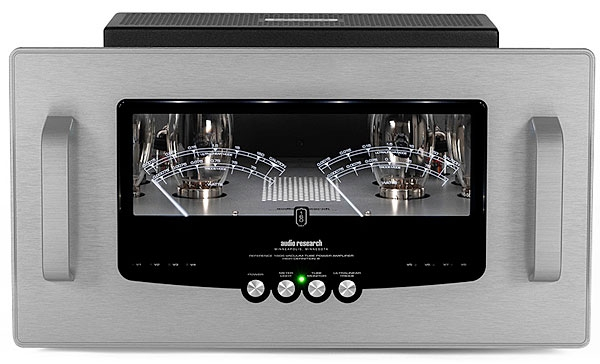
. . . the most important difference between the 160 S and the 160 M are . . .
• The 160 power supply is more robust.
• Those house-made passive components have been tweaked for better sound. That includes transformers, which are made to spec by a domestic company; some of these have been improved compared to previous Reference-series parts.
• The auto-bias circuit has been updated, resulting, Gordon says, in longer tube life and, it is claimed, better sonics due to a reduction in residual DC currents in the output transformer.
• Gordon told me that the 160 M and 160 S both use a new, four-layer circuit board, "which allows for more optimal signal routing, with a smaller footprint, and less noise, thanks to the separate ground plane."
• A single-ended (RCA) input has been added—a first for an ARC Reference-series amplifier.
• The 160 M and 160 S amps are the first Audio Research amplifiers to allow switching between triode and Ultralinear operation
They say that every amplifier has its own sound, and I'm sure that's true. But not every sound imposes itself on music in ways that matter. Through all of this, I noticed no particular coloration; in fact, the sound was more open than I'm used to, which I take to be the absence of coloration. The soundstage was three-dimensional, sometimes startlingly so. On some recordings, images seemed etched; on others they seemed loose, bloody, and abundant. Whether from a violin's bow or a piano's hammer, transients seemed natural. On well-recorded piano, the balance between woody impact and string tone seemed ideal—this all still in Ultralinear mode. To paraphrase JGH describing the D-150 years ago, if the Reference 160 had a sound of its own, I couldn't hear it
Audio Research REF 160S, Triode mode, 8 ohm tap, frequency response at 2.83V into: simulated loudspeaker load (gray), 8 ohms (left channel blue, right red), 4 ohms (left cyan, right magenta), 2 ohms (green) (1dB/vertical div.).
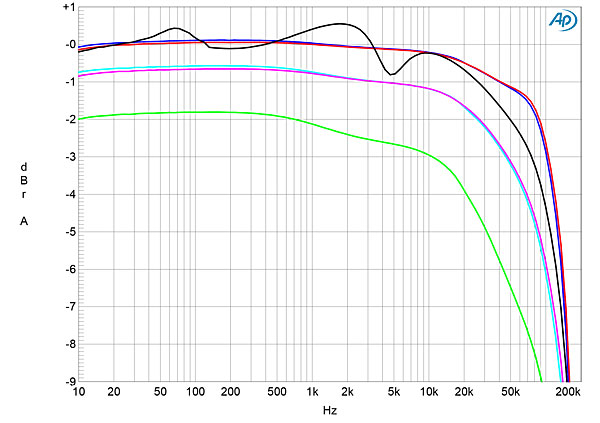
Audio Research REF 160S, Ultralinear mode, 8 ohm tap, frequency response at 2.83V into: simulated loudspeaker load (gray), 8 ohms (left channel blue, right red), 4 ohms (left cyan, right magenta), 2 ohms (green) (1dB/vertical div.).
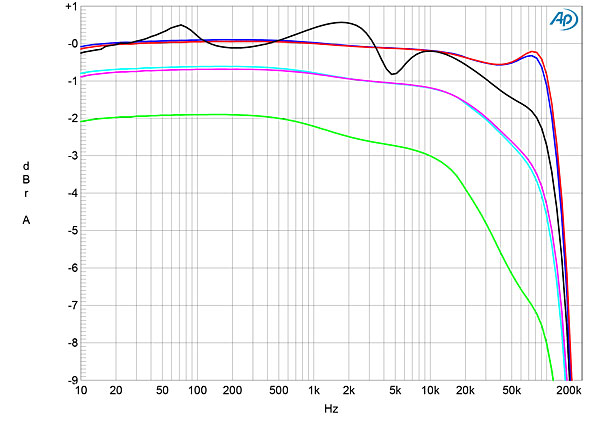
Audio Research REF 160S, Ultralinear mode, 16 ohm tap, THD+N (%) vs frequency at 6.3V into: 16 ohms (left channel gray), 8 ohms (left blue, right red), 4 ohms (left cyan, right magenta).
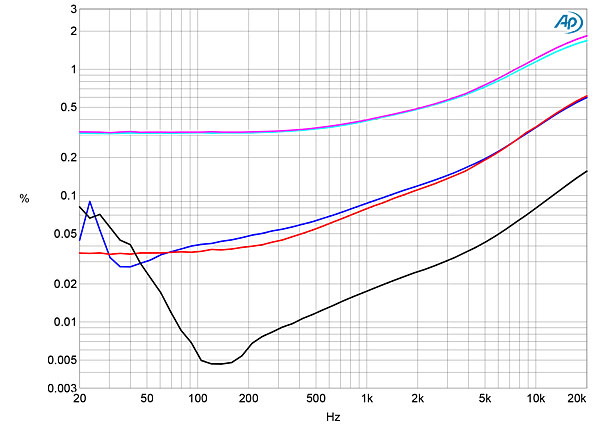
Audio Research REF 160S, Triode mode, 4 ohm tap, THD+N (%) vs frequency at 6.3V into: 16 ohms (left channel green), 8 ohms (left blue, right red), 4 ohms (left cyan, right magenta) 2 ohms (left gray).
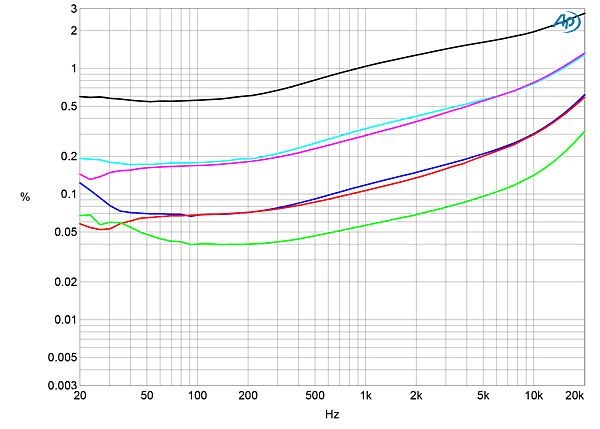
Description: Fully balanced, class-AB tubed stereo power amplifier. Tube complement: four KT150 (output), two 6H30 (gain stage) per channel. Inputs: unbalanced (RCA), balanced (XLR). Three sets of speaker output taps: 4, 8, 16 ohms. Output power: 140Wpc continuous, 20Hz–20kHz (21.5dBW). Frequency response: 0.5Hz–110kHz –3dB at 1W. Power bandwidth: –3dB at 5Hz and 70kHz,. Input sensitivity: 2.4V RMS balanced for rated output (25.5dB gain into 8 ohms). Input impedance: 300k ohms balanced, 100k ohms single-ended. Output regulation: ca 0.6dB into 16 ohm load to open circuit (damping factor: ca 14). Overall negative feedback: 14dB. Slew rate: 13V/µs. Rise time: 2.0µs. Power requirements: 400W at rated output, 260W at idle, 1W off.
Dimensions: 19" (483mm) W × 10.25" (260mm) H × 21.5" (546mm) D; with handles, 24" (610mm) D. Weight: 100 lb (45.4kg) net, 73.2 lb (25.5kg) shipping.
Serial number of unit reviewed: 51780.
Jim Austin | Jan 21, 2020

Audio Research Reference 160S power amplifier
This, our February issue, is the first Stereophile issue to arrive during the year 2020, which marks the 50th anniversary of the founding of Audio Researchin my view one of the key events in the history of high-end audio. So it makes sense for this issue to include an Audio Research reviewin...
